
“Good design is not a particular style,” says the Milanese architect and interior designer Fabrizio Casiraghi. “It could be maximalist or minimalist, modern or vintage, but it is always timeless. It always stays in time.”
This idea of longevity is the guiding principle behind the many homes, hotels, restaurants, boutiques and nightspots that Casiraghi has envisaged since starting his namesake Paris studio in 2015. Whether working on the forthcoming Four Seasons, set in a 15th-century palace in the shadow of Vatican City’s St Peter’s Basilica, or the recreation of the legendary 1930s lunch spot Sant Ambroeus Milano, Casiraghi creates spaces that combine old-world refinement with moments of avant-garde surprise.
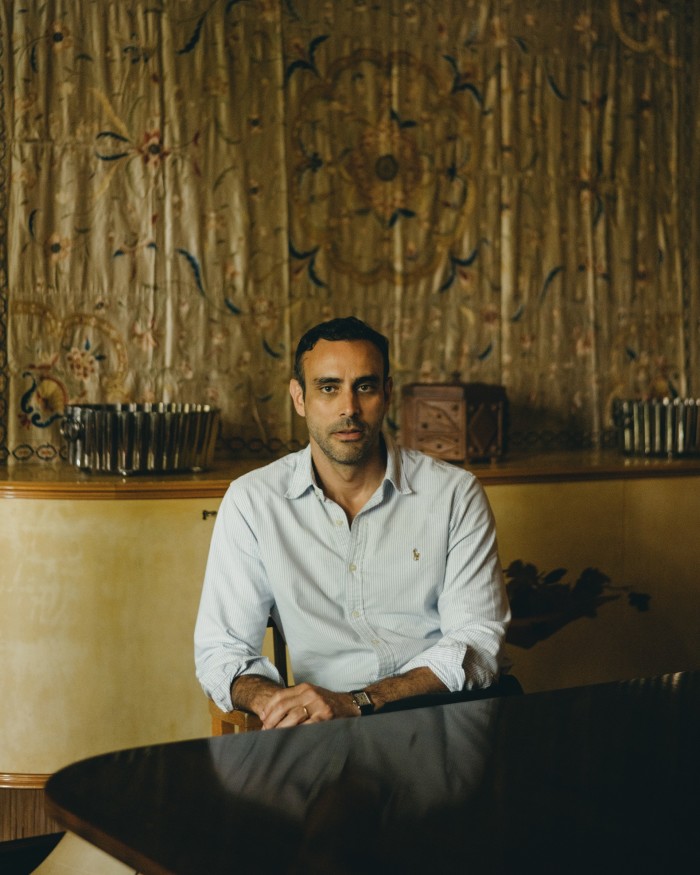
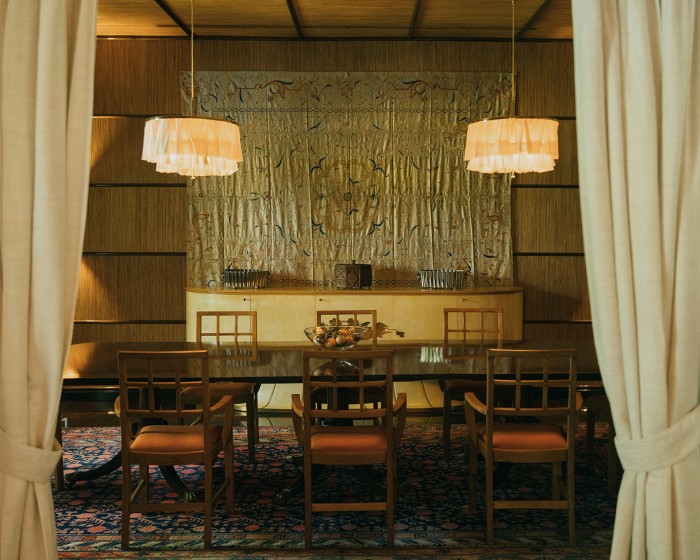
At the sumptuous 1940s waterside home he has conceived for clients in Miami Beach, Casiraghi installed a custom-created sculptural fish fountain inside its shady, palm- and wisteria-filled interior courtyard. A testament to his research-led approach, it’s fashioned after a statue in the film Mon Oncle, Jacques Tati’s 1958 satire of midcentury modernism. “The owners are fanatical about fishing,” explains the designer, who was charged with maintaining a sense of history while elevating its luxurious credentials.
Casiraghi left the structural architecture largely intact, layering the plushly bohemian interior with Persian rugs, Adolf Loos lighting and art deco furnishings all set against a backdrop of white and pale terracotta and frescoed ceilings. So enamoured were the owners they’ve called him back to reimagine the interior of their latest acquisition – a midcentury motor boat that previously belonged to the commodore of the New York Yacht Club.
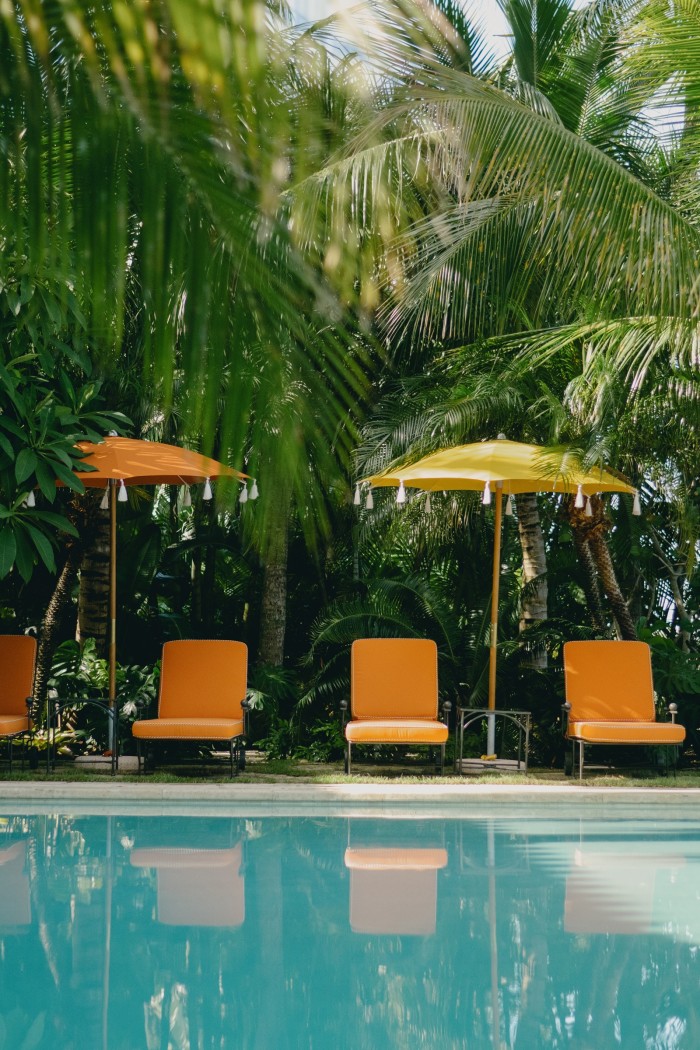
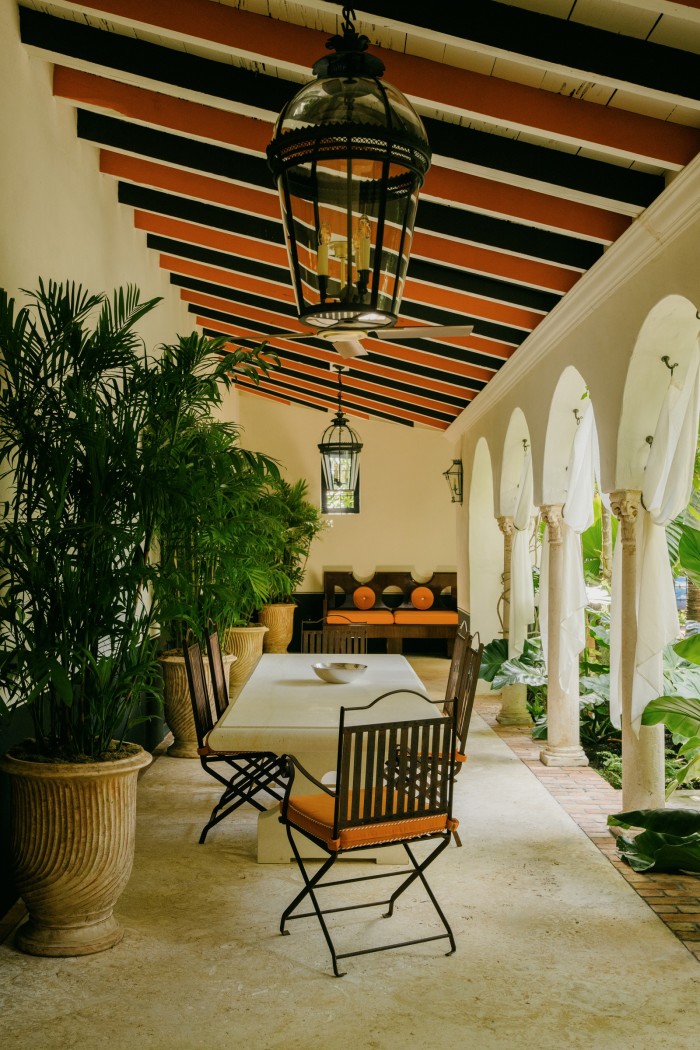
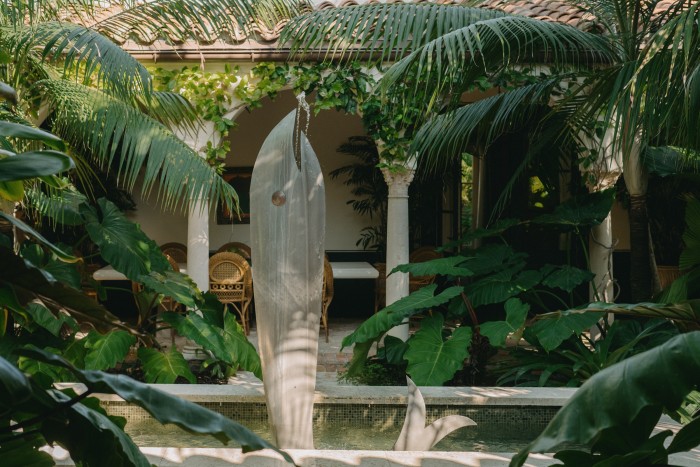
“It’s always been my dream to create a boat,” says Casiraghi of the project, which continues the vernacular of the Spanish-style beach house. The yacht’s brass- accented, high-shine walnut panelling will be hung with a vast array of canvases. “Like the main house, I wanted to keep the old style of the boat but upgrade the comfort level,” says Casiraghi of the gallery-style arrangement. After converting the dining room into a fifth bedroom (a VIP guest cabin), Casiraghi dreamt up everything from the custom dinner plates to the hand-embroidered towels – even commissioning art director Pierre-Alexis Guinet to create their bespoke shell insignia.

His exacting eye is particularly excited by the realm of hospitality. “There was a moment in hotels when the interior designer only appeared at the end of the project,” says Casiraghi. “Instead, I’m there from the start, talking to the chef and the sound designer and thinking about the visual identity of the menu and the smell of the space. Clients today want a total experience, and even the smallest detail has the power to speak the language of the hotel.”
Despite the growing demand for his work, Casiraghi keeps his Champs-Élysées studio in Paris deliberately small. “I want to stay atelier-sized,” he says of the 20-strong team. He prefers to personally oversee each project, first carefully considering the interior architecture and realisation of the space, before turning his attention to the decorative elements. “If someone asks for a mood board in three weeks, it’s a red flag,” he says. “I always take the time to really understand the way the client wants to live.”
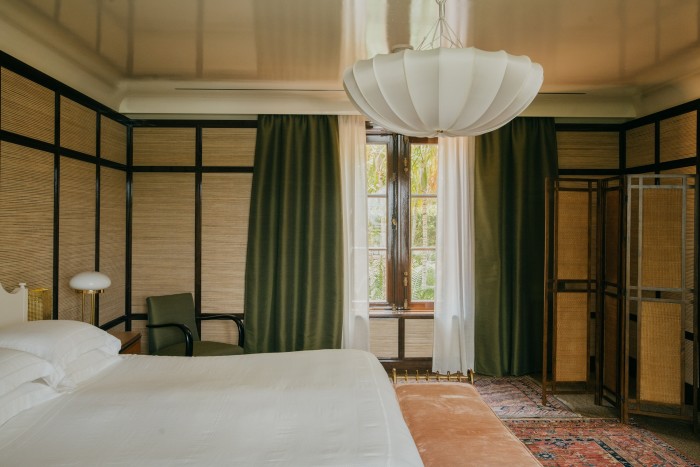
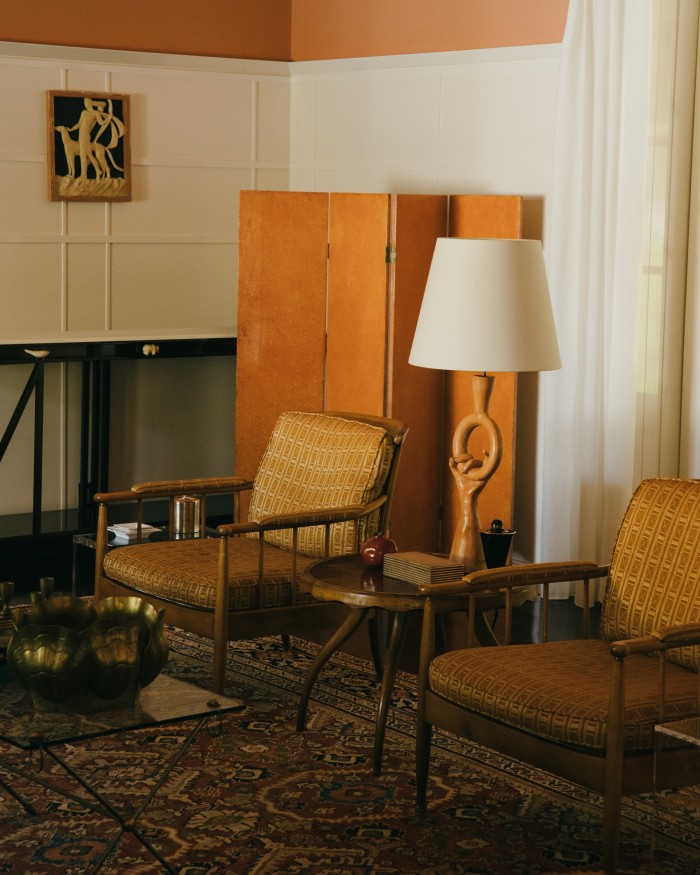
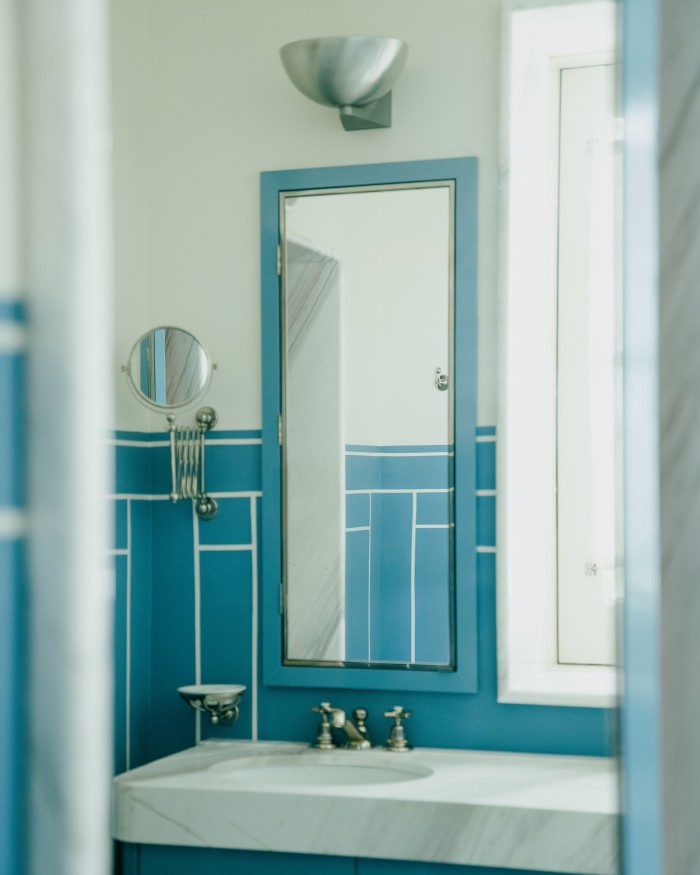
Shuttling between projects – which currently include a Portofino hotel, a private club in Milan, a Manhattan apartment and a house in Montecito, California – is all part of the allure. “It’s important not to just be closed in the four walls of the studio,” says Casiraghi, who applies a similar curiosity to other creative endeavours. In 2022, the studio exhibited its debut collection of furniture at Galerie Chenel in Paris, filling the interior with dark wood oversize mirrors, a large screen clad in a geometric Anni Albers textile, and a series of side tables and consoles, each decked with animalistic totems. In October 2023, he launched a trio of carpets for Nordic Knots, drawing on the architecture of France’s Villa Kérylos and the figures of Italian designer Gio Ponti. He approaches these projects as a chance to have some fun. “It helps me to stay inspired,” says the designer, who is currently working on a capsule of hand-wrought bronze locks and handles for the British brand Izé.
While the studio’s output is defined by its diversity, Casiraghi thrives on ritual. He lives in a 19th-century French Restoration style building a short bike ride from the studio with his architect husband, Fortuné Penniman. Adhering to the same daily gym-and-running routine for decades, he prefers dinner with his close circle of friends to partying. He was born to a Milanese family; his father was the photo director at the Corriere della Sera newspaper, while his mother worked with PhD students at the city’s polytechnic. Theirs was a creative and politically charged household. “Aesthetics were important,” says Casiraghi, whose grandfather is the politician Remo Casiraghi. He travelled extensively as a child, visiting Kenya, Egypt, Cuba and the Bahamas – experiences that still resonate in his work.
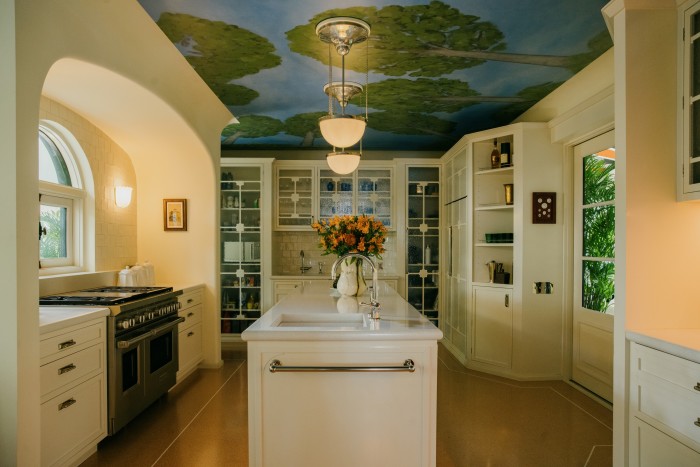
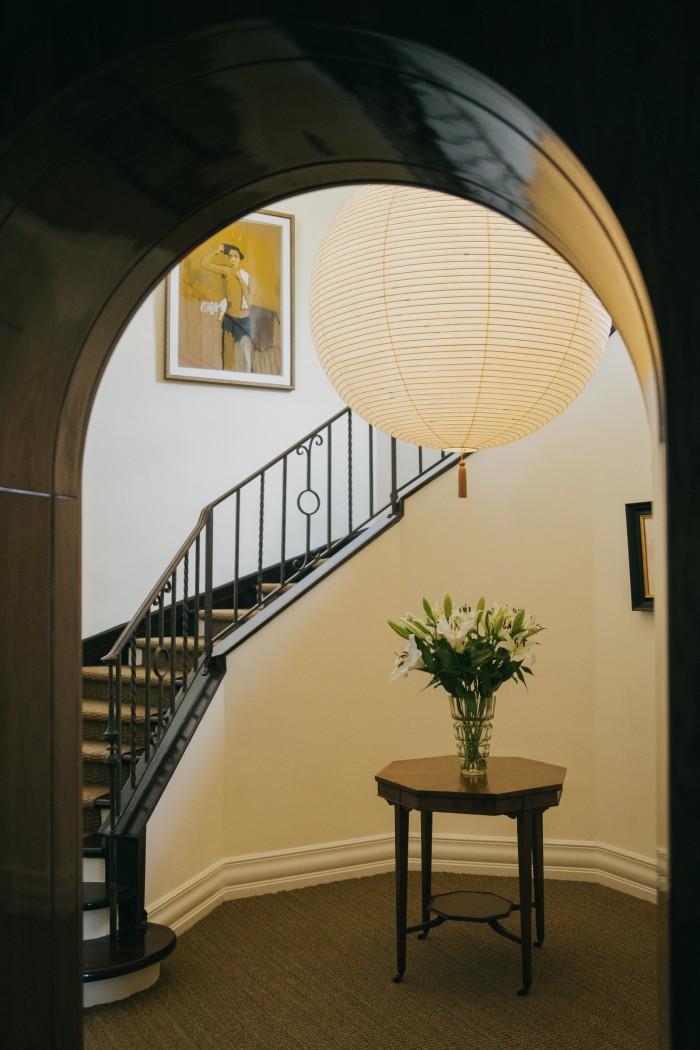
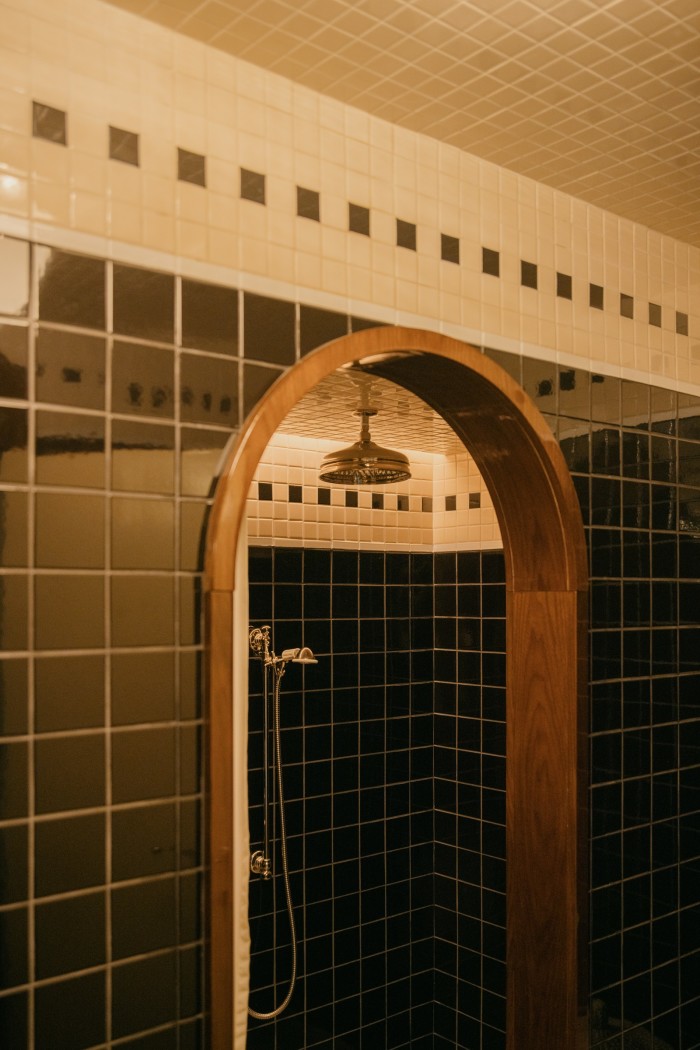
Casiraghi’s parents were surprised when, rather than follow a political path, he enrolled in urban planning at the Milanese Politecnico. “I was not fanatical about architecture,” he says. “I was drawn by the possibility of creating a beautiful space, a beautiful object or a beautiful place to live.” Immersing himself in the 20th-century Italian architecture on show at Milan’s Polytechnic School of Design, he volunteered at the FAI (the Italian equivalent of the National Trust) following his graduation, spending two years at Villa Necchi Campiglio. His time at the 1930s house museum, which was designed by the Italian architect Piero Portaluppi, proved formative: “It helped me to understand the importance of details – the paintings, the materials, the textures and the colours.”
After two years at Dimorestudio, Casiraghi made his studio debut with a bijou store for candlemakers Trudon on New York’s Elizabeth Street. In 2017, when his agent Julien Desselle commissioned him to work on his Venetian apartment, he filled the terrazzo-floored jewel box with rich tones and offbeat finds – from Gabriella Crespi ashtrays to African masks and 18th-century Chinese screens – that took him years to amass. “Fabrizio’s work speaks to the history of design and architecture, whilst also relating to his own personal past,” says his friend Aaron Aujla of Green River Project, who together with his wife, American fashion designer Emily Adams Bode Aujla, recently collaborated with the studio on the resplendent embroidered wall-panel scenes and sconces that decorate the bar at the Grand Hotel Bellevue London.
With its idiosyncratic touches and muted Milanese palette, the hotel’s interior is a paean to the pared-back elegance of his great design inspirations – the Vienna Secession and Swedish Grace. The ultimate goal for Casiraghi is always a sense of balance and sobriety. “Nothing should shout,” he says. “Whether I’m working for the cardinals at the Vatican or the socialites in the nightclubs of New York, I’m looking for a language that will last for the next 50 years.”